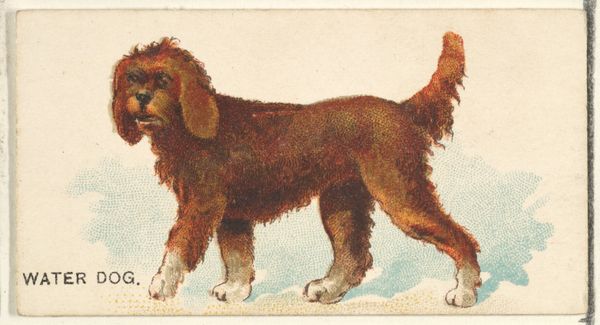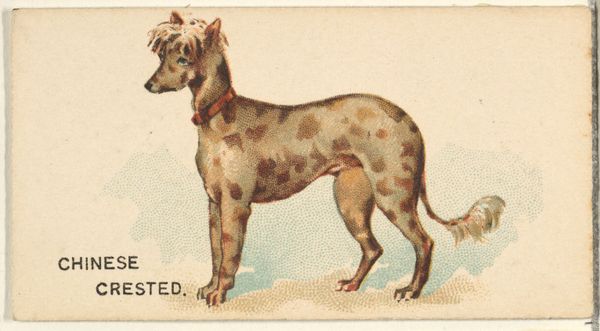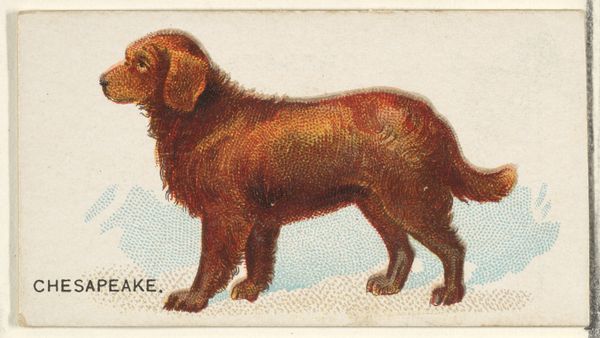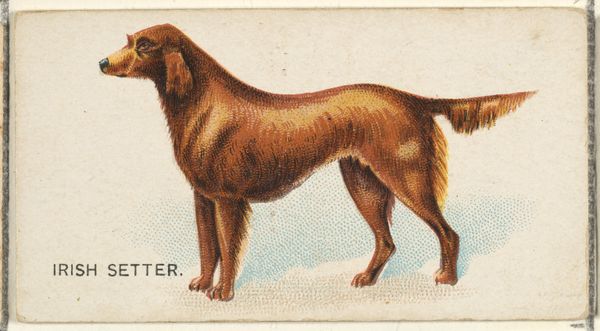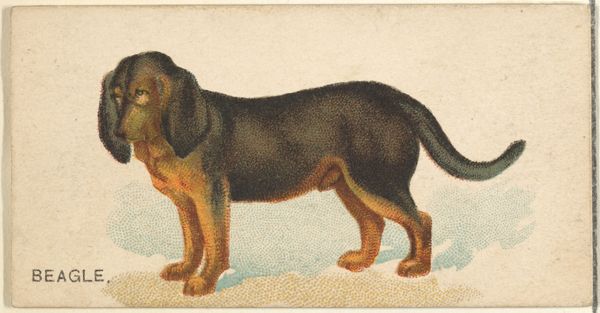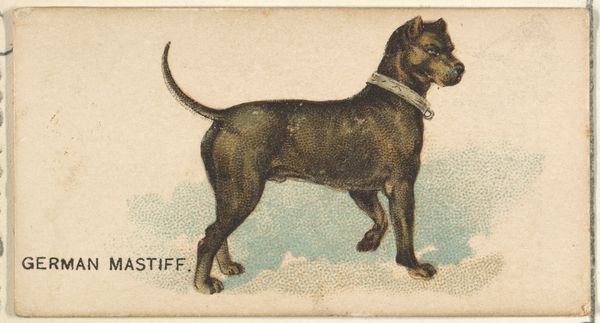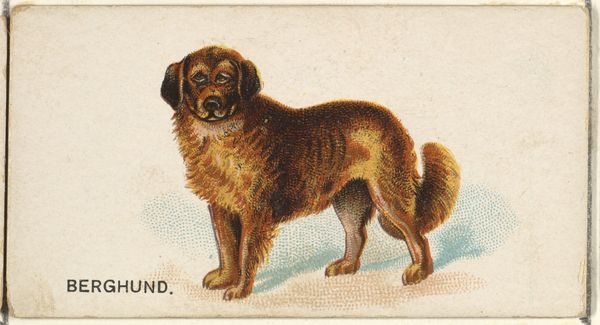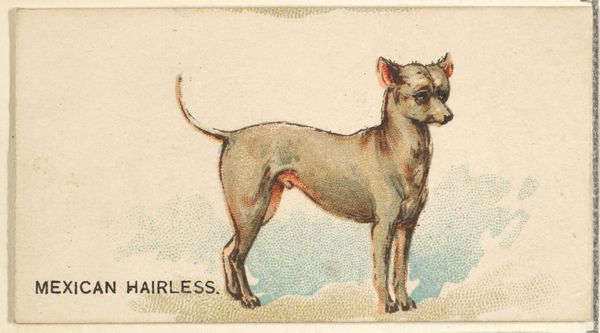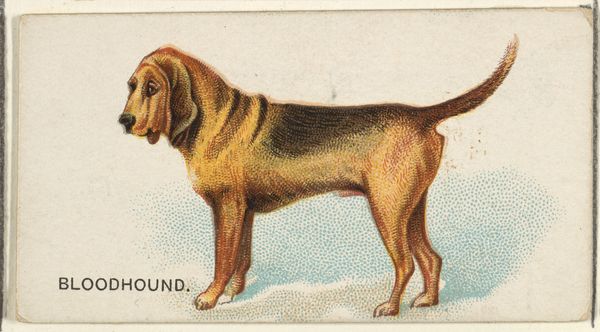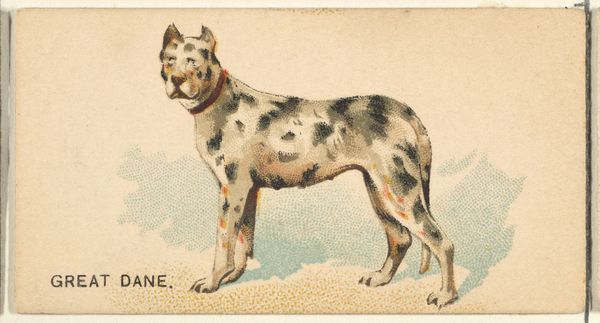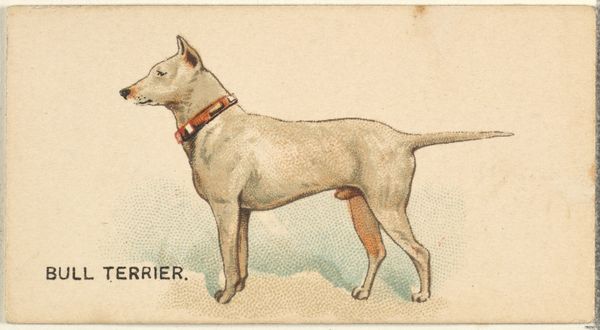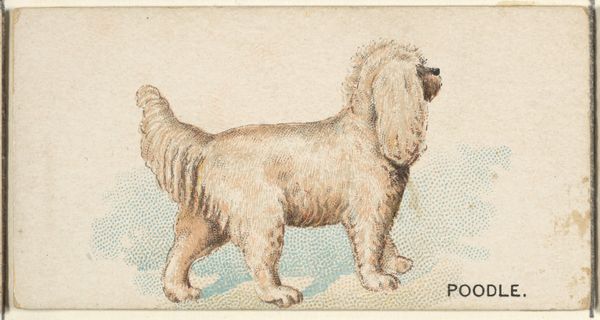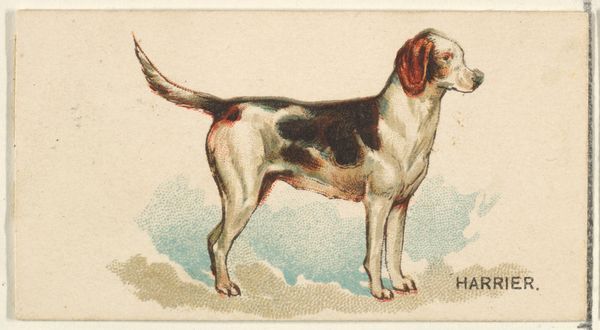
Chinese Puzzle, from the Dogs of the World series for Old Judge Cigarettes 1890
0:00
0:00
graphic-art, print
#
graphic-art
#
animal
# print
#
dog
#
coloured pencil
Dimensions: sheet: 1 1/2 x 2 13/16 in. (3.8 x 7.1 cm)
Copyright: Public Domain
Editor: So, this is "Chinese Puzzle," from the "Dogs of the World" series by Goodwin & Company, dating back to 1890. It's a print, almost like a trading card. I’m immediately struck by the odd, slightly unsettling gaze of the dog, and I am curious to learn more about its background and social context. What's your take on it? Curator: It's fascinating how these images functioned as promotional material. Consider that this wasn't intended as high art but as a collectable included with Old Judge Cigarettes. How do you think this placement within consumer culture shaped its style and subject matter? Editor: Well, maybe that accounts for its…simplicity? Like, it needs to be instantly recognizable and appealing. I suppose if you’re trying to sell cigarettes, a noble looking dog would likely fit the bill. Curator: Exactly. But there's also a deeper layer. "Dogs of the World" – what does that say about the prevailing worldview at the time? It was the height of Imperialism. Consider how such images might contribute to the construction of racial and national identities through the representation of something as seemingly benign as dog breeds. Do you notice anything that could point to orientalism tendencies? Editor: Now that you mention it, the name "Chinese Puzzle" itself is a bit... loaded. It feels like it exoticizes both the dog and China. And framing these dogs as part of a global collection does reinforce this sense of a world neatly organized and cataloged by the West. I’d never considered these implications! Curator: Right. These images aren’t neutral. They participated in broader cultural projects. The “gaze” you identified earlier reflects those power dynamics too. We should question what political work even something like a dog portrait performs. Editor: This has totally changed my perspective. I went in thinking this was a charming little card, and now I see it’s a reflection of a whole system of cultural categorization and power. Curator: Exactly, that’s what makes studying the history of art so exciting!
Comments
No comments
Be the first to comment and join the conversation on the ultimate creative platform.

